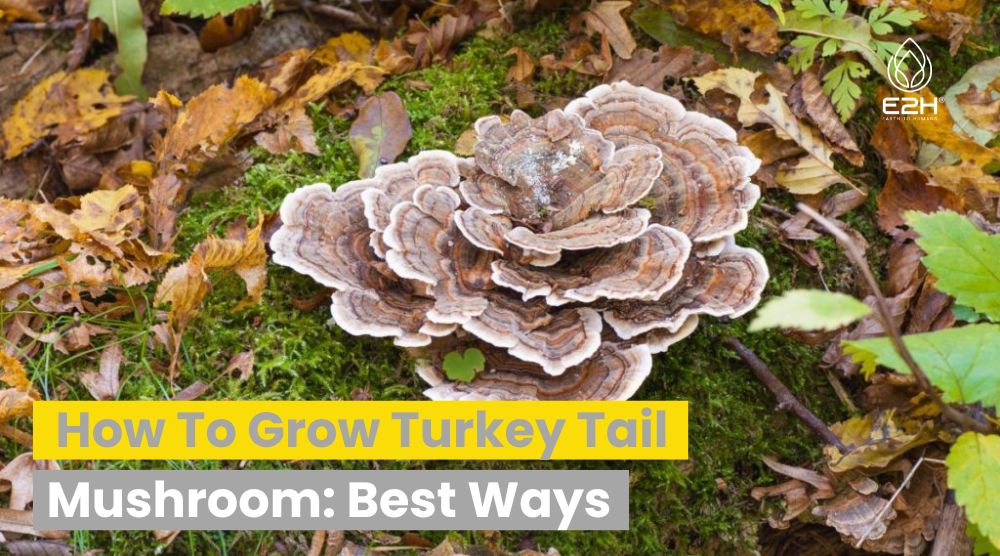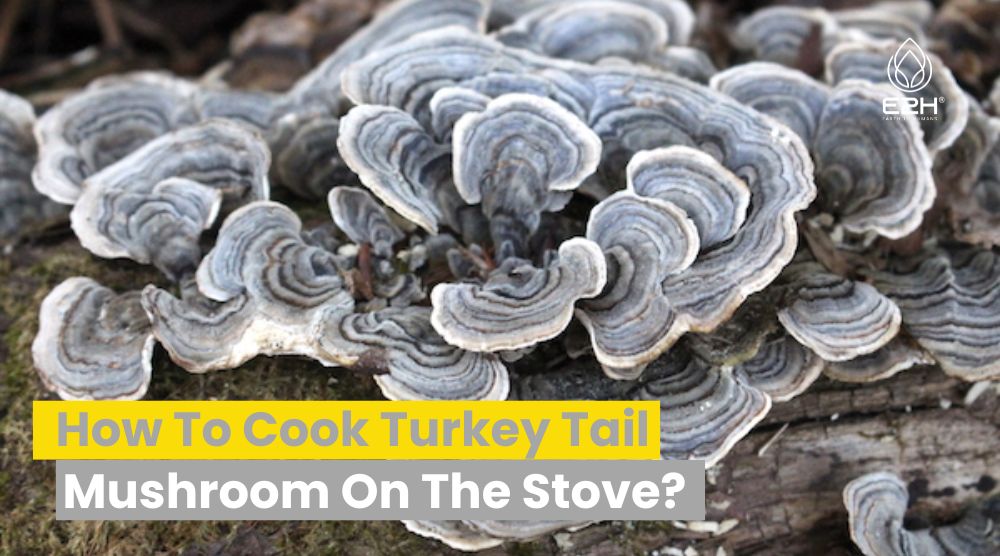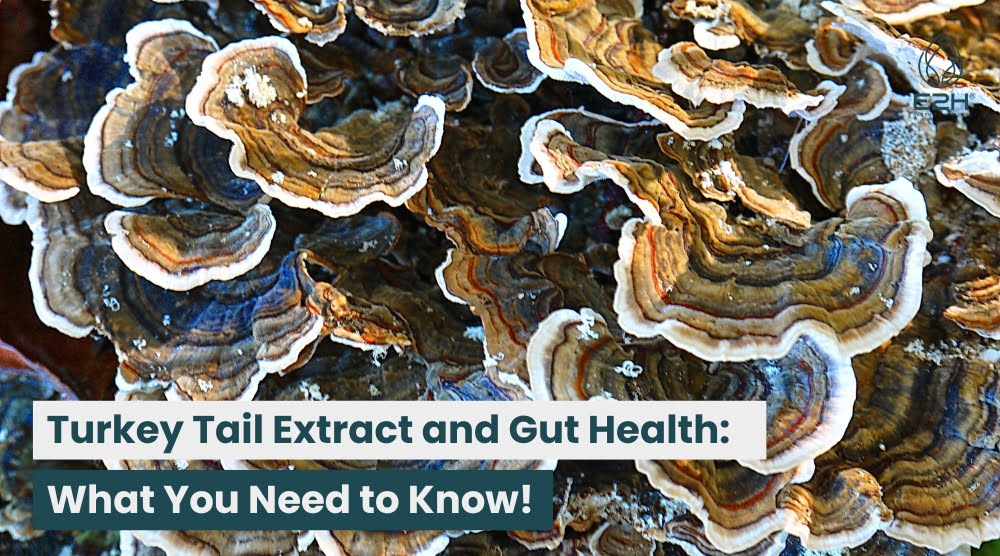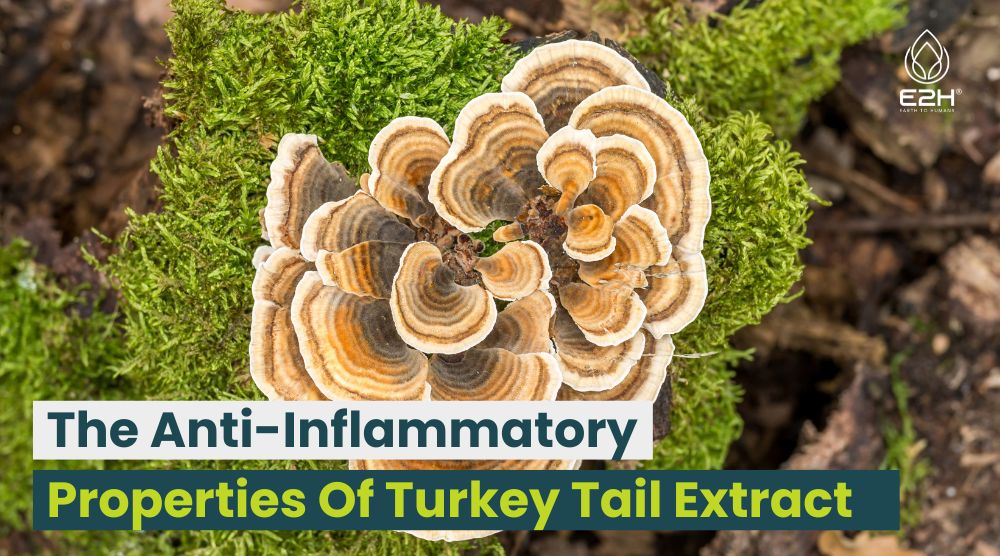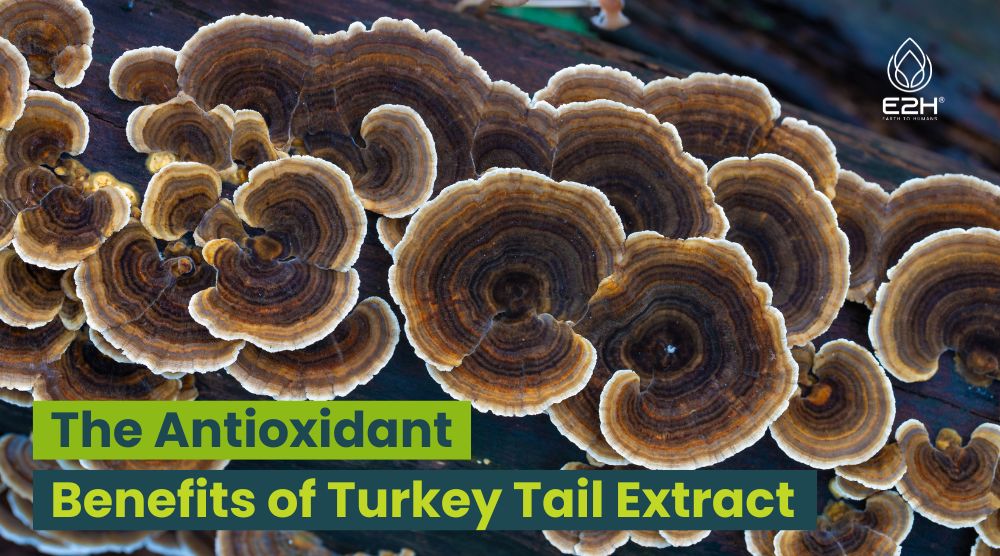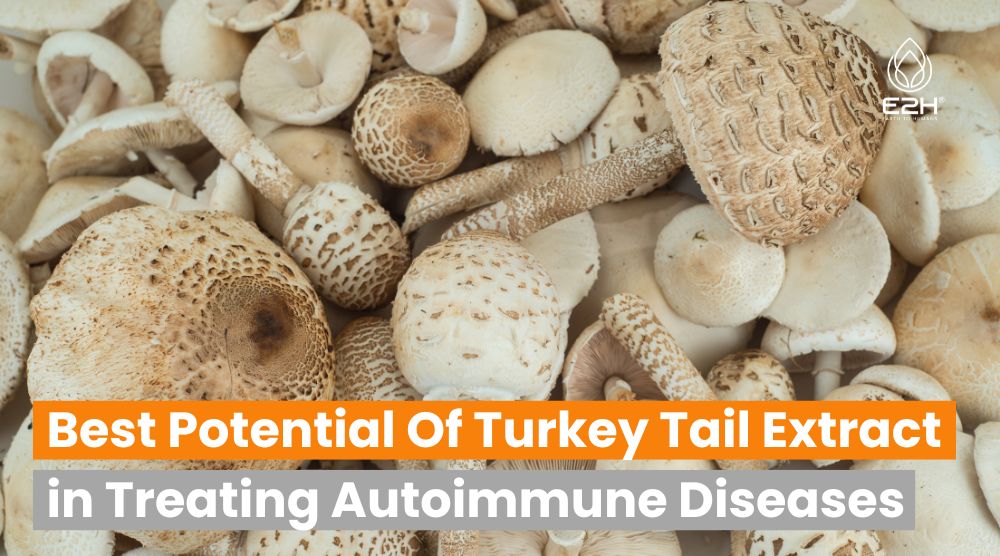How To Grow Turkey Tail Mushroom: To grow turkey tail fruit or mushrooms, obtain spawn, select a suitable growing medium like logs or straw, inoculate the medium with the spawn, maintain optimal moisture, light, and temperature, and harvest fruit when mature.
Benefits of Growing Turkey Tail Mushroom
Cultivating turkey tail mushrooms at home offers several advantages.
- Firstly, you gain a sustainable source of this valuable medicinal, mushroom species.
- Secondly, by growing your own turkey tails yourself, you have control over the cultivation process of medicinal mushrooms, ensuring the mushrooms are free from pesticides and contaminants.
- Lastly, it can be a rewarding and educational experience to witness the entire growth cycle of these fascinating fungi.
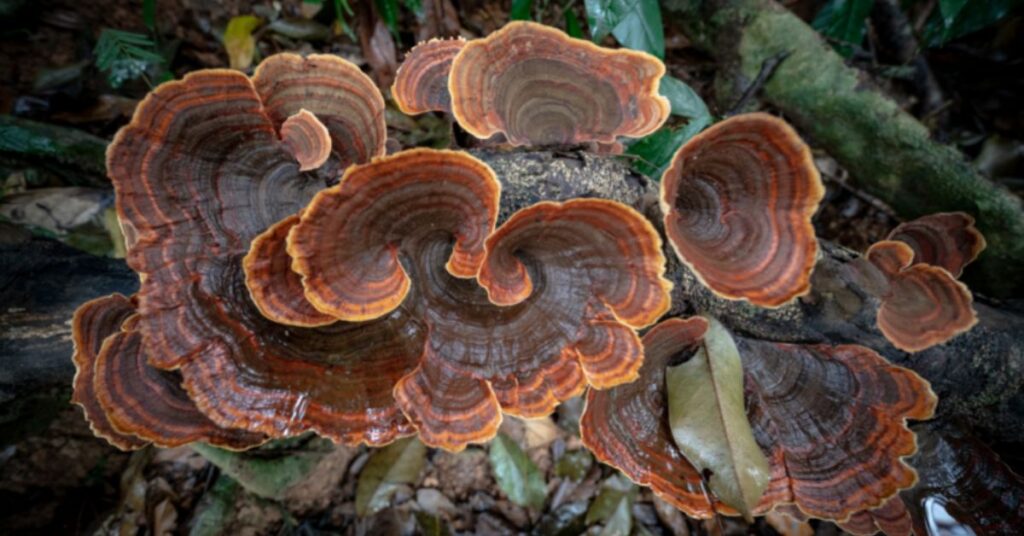
Where do turkey tail mushrooms grow?
Turkey tail mushrooms, scientifically known as Trametes versicolor, are widely distributed and can be found growing in various regions around the world. They are commonly found in temperate forests, particularly on dead or decaying hardwood logs, stumps, and fallen trees.
Turkey tail mushrooms have a remarkable ability to adapt and thrive in different environments, making them versatile in their natural habitat. Their unique appearance, with their concentric rings and colorful bands resembling a turkey’s tail, helps in their identification. Whether you’re exploring forests, wooded areas, or even urban parks, keep an eye out for these beautiful fungi growing on decaying wood, adding a touch of natural beauty to the landscape.
Suitable Growing Conditions
Turkey tail mushrooms thrive in specific environmental conditions. They require a temperate climate with temperatures ranging between 55°F and 75°F (13°C and 24°C). Additionally, they prefer indirect and direct sunlight, or partial light and shade. If you live in an area with colder or hotter temperatures, you can still grow them indoors using appropriate equipment and techniques.
Choosing the Right Growing Medium
To cultivate turkey tail mushrooms, you need a suitable growing medium. Hardwood logs or stumps, such as oak or maple, are ideal for turkey tail logs, as they mimic the mushroom’s natural habitat. Alternatively, you can use straw, sawdust, or supplemented wood chips as a growing substrate. Each medium has its own advantages, so choose the one that suits your resources and preferences best.
Sourcing Turkey Tail Mushroom Spawn
Turkey tail mushroom spawn, also known as turkey tail mycelium, is required to initiate the growth process. You can obtain turkey tail mushroom spawn from reputable suppliers, gardening stores, or online retailers specializing in turkey tails mushroom cultivation. Make sure to select high-quality turkey tails and spawn to ensure a successful harvest.
Preparing the Growing Environment
Before introducing the turkey tail mushroom spawn to the growing medium, it’s essential to prepare the environment properly for the turkey tail mushroom and many other species. If you’re using logs from hardwood trees or stumps, ensure they are well-aged and free from competing fungi. For other growing mediums like straw or sawdust, pasteurize them by steaming or boiling to eliminate any unwanted organisms that may hinder mushroom growth.
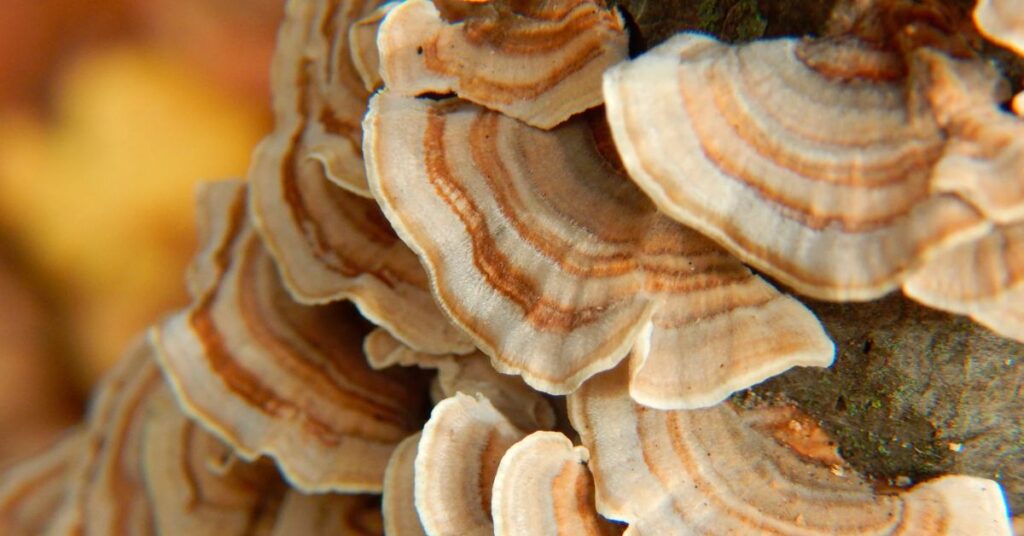
Inoculating the Growing Medium
Once your growing medium is ready, it’s time to inoculate it with turkey tail mushroom spawn. Follow the instructions provided with the turkey tails mushroom spawn carefully. Typically, you’ll need to drill holes into the logs or mix the spawn thoroughly with the growing medium. This step allows the mycelium to colonize tiny pores in the substrate and establish a network for fruiting.
Providing Optimal Care
To ensure successful growth, turkey tail mushrooms require consistent care and maintenance. Proper moisture levels are crucial, throughout growing season so monitor the humidity and provide regular watering or misting as needed. Maintaining an optimal temperature range is equally important. Protect the whole tail growing environment from extreme heat or cold, and make adjustments accordingly.
Managing Moisture and Temperature
Maintaining an appropriate moisture level is essential for the growth of turkey tail mushrooms. Regularly check the moisture content of the growing medium, ensuring it remains moist but not overly saturated. You can use a spray bottle or a humidifier to control humidity levels. Likewise, monitor the temperature and provide insulation or ventilation to maintain the ideal range.
Controlling Pests and Diseases
Just like any other crop, turkey tail mushrooms can be susceptible to pests and diseases. Preventing and managing these issues is crucial for a successful harvest. Regularly inspect the growing environment for signs of pests or contamination. Implement organic pest control methods, such as neem oil or beneficial insects, to protect the mushrooms from harmful invaders.
Harvesting and Storing Turkey Tail Mushroom
After several months, your turkey tail mushrooms will be ready for harvest. Harvesting should be done when the mushrooms have fully matured but are still soft and flexible. Carefully cut open or twist the mushrooms from the substrate, leaving a portion intact for regrowth. Store harvested mushrooms in a paper bag or a breathable container in the refrigerator to maintain freshness.
Enjoying the Benefits
Now that you have successfully grown your own turkey tail mushrooms, it’s time to enjoy the incredible health benefits they offer. Turkey tail mushrooms contain polysaccharopeptides and beta-glucans, which have immune-stimulating medicinal properties. Incorporate them into your diet by adding them to soups, stir-fries, or steeping them in hot water to create a medicinal tea. Be creative and explore different ways to find turkey tail mushrooms to savor their unique flavor and enhance your well-being.
Can I grow my own turkey tail mushroom?
Absolutely! You can cultivate your own turkey tail mushrooms with the right knowledge and resources. Obtain turkey tail mushroom spawn from reputable suppliers or stores specializing in mushroom cultivation. Choose a suitable growing medium like hardwood logs or straw, and inoculate it with the spawn. Maintain proper moisture, temperature, and environmental conditions for successful growth. With patience and care, you can enjoy the satisfaction of growing your own supply of turkey tail mushrooms, packed with their unique health benefits and culinary uses.
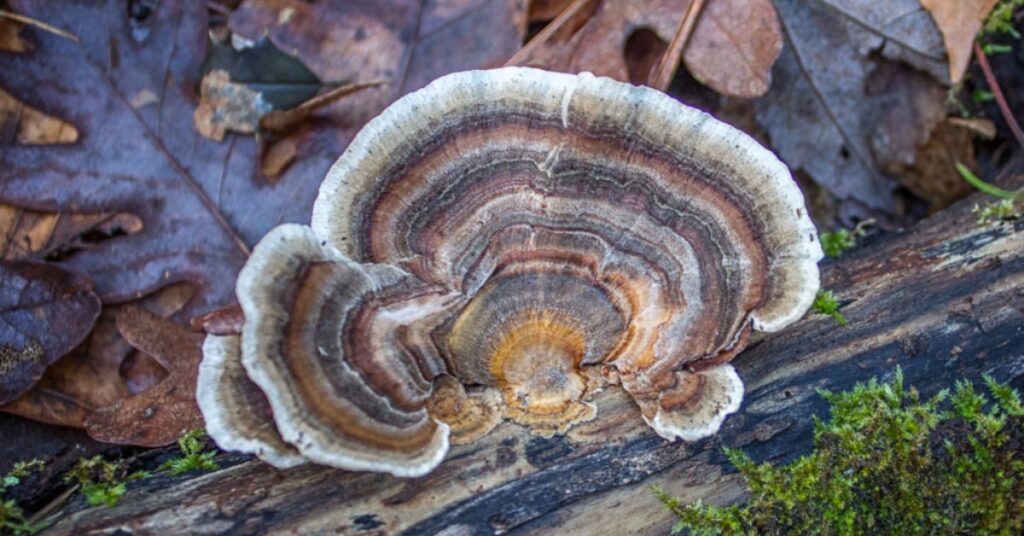
Can turkey tail be cultivated?
Yes, turkey tail mushrooms can be cultivated. While they naturally grow on either dead trees or dying trees and decaying logs, it is possible to recreate their ideal habitat in a controlled environment. By providing the right growing conditions such as a suitable substrate, proper moisture levels, and optimal temperature, turkey tail mushrooms can be successfully cultivated. Whether you choose to grow them outdoors on logs or indoors using different growing mediums, cultivating turkey tail mushrooms allows you to have a consistent supply of these valuable fungi.
Is turkey tail mushrooms hard on the liver?
No, turkey tail mushrooms are not considered hard on the body or liver. In fact, they have been used in traditional medicine for their potential liver-protective properties. Turkey tail mushrooms contain bioactive compounds like polysaccharopeptides and beta-glucans, which have been studied for their positive effects on liver health. However, it’s always important to consume false turkey tail mushrooms in moderation and consult with a healthcare professional if you have specific concerns regarding your liver or any existing health conditions.
GROWING TURKEY TAIL MUSHROOM ON SAWDUST BLOCKS, Monotub Setup, Tips & Tricks from Start to Finish
FAQs
Can turkey tail mushrooms be grown indoors?
Yes, turkey tail mushrooms can be cultivated indoors using appropriate equipment and techniques. Ensure proper temperature, humidity, and lighting conditions.
How long does it take for turkey tail mushrooms to grow?
The growth cycle of wild turkey tail mushrooms can vary, but typically it takes around 6 to 12 months from inoculation to harvest.
Are there any precautions to take while harvesting wild turkey tail mushrooms?
When harvesting wild turkey tail mushrooms, ensure they are fully mature but still soft. Leave a portion attached to the ground substrate for regrowth and avoid damaging the mycelium.
Can I make medicinal use of turkey tail mushrooms for medicinal purposes?
Yes, turkey tail mushrooms have long been used in traditional medicine for their immune system-boosting properties. Consult with a healthcare professional for guidance on usage and dosage.
Are there any look-alike mushrooms that should be avoided?
While turkey tail mushrooms are generally safe to eat and easy to identify, it’s always important to exercise caution when foraging. Avoid consuming any mushrooms unless you are absolutely certain of their identification.
Conclusion
Growing turkey tail mushrooms is a rewarding endeavor that allows you to enjoy the flavor and numerous benefits of this remarkable fungus. By following the steps outlined in this article, you can cultivate your own supply of different colors and strains of turkey tail mushrooms and incorporate them into your daily routine. Whether you’re an avid mushroom enthusiast or simply seeking to boost your body and immune system naturally, the process of growing turkey tail mushrooms offers both satisfaction and a healthy harvest.
